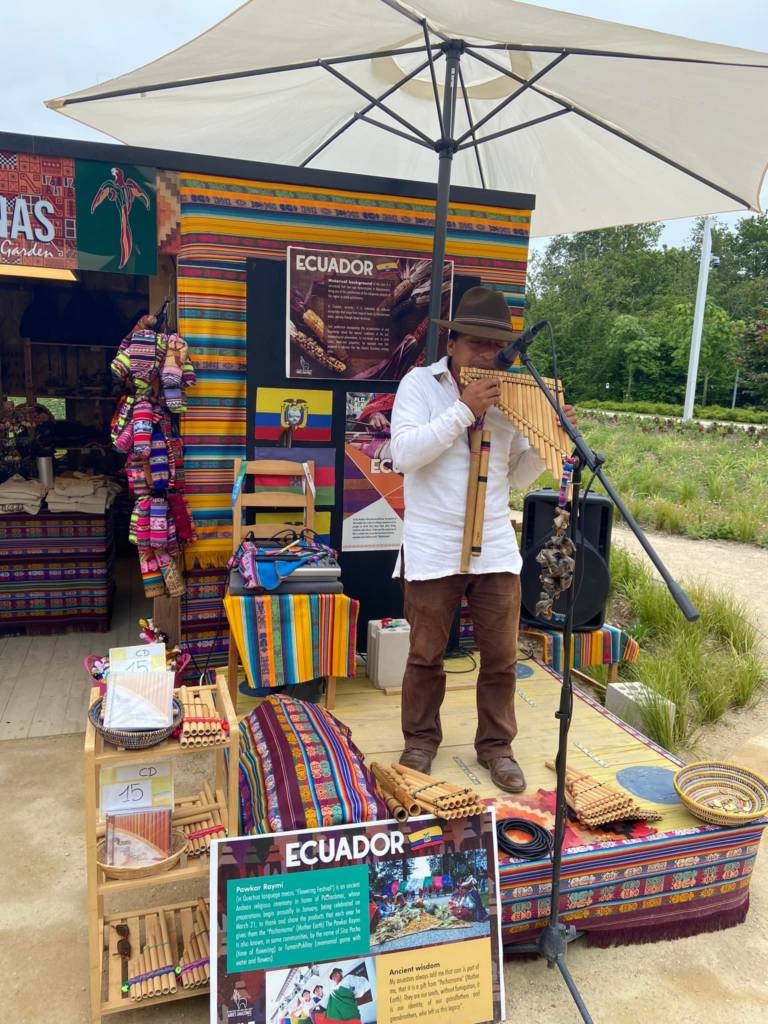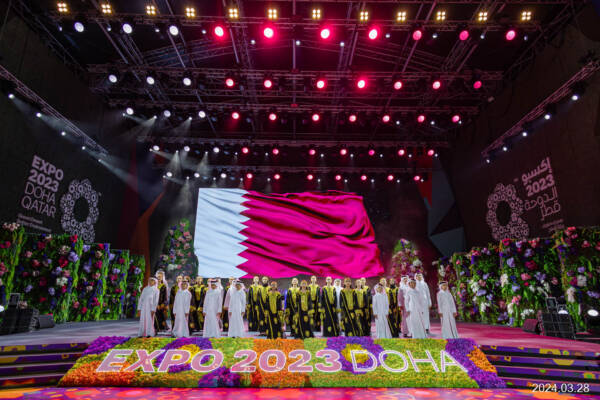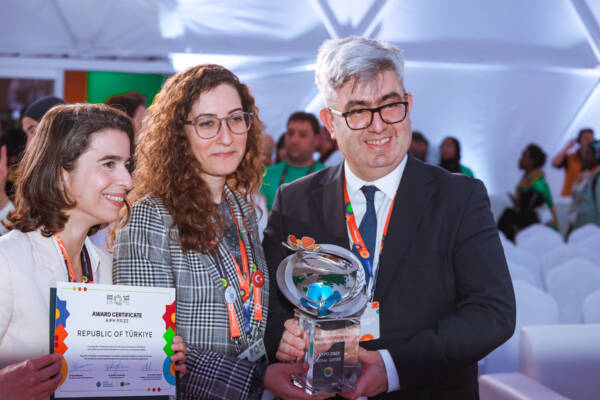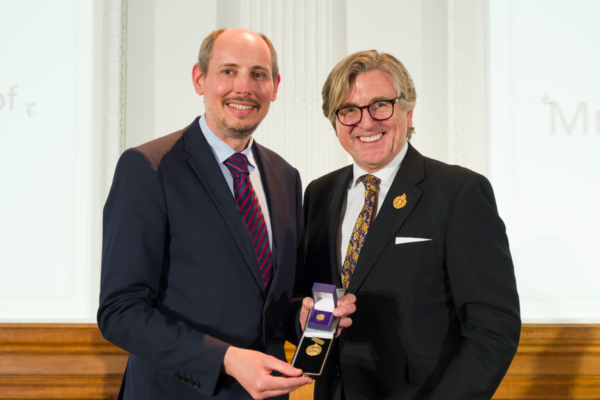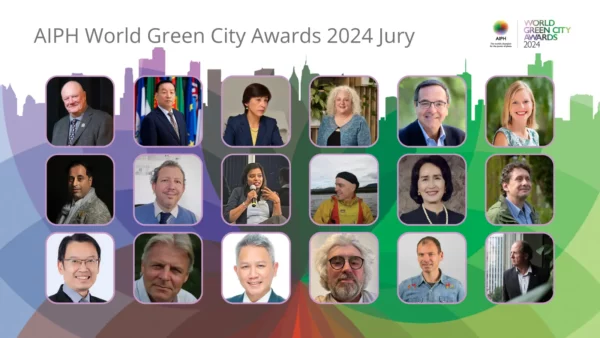In the summer sun, Expo Floriade 2022 is proudly blooming, and the pavilion and garden exhibitions provide a rich source of horticultural delight.
The exhibitors are attracting many visitors who are mainly looking for inspiration and new ideas: landscape or garden design, new products (plants, trees, etc) and home decoration.
So an essential part of this AIPH-approved World Horticultural Expo in Almere-Amsterdam are the gardens and pavilions which Expo participants have built and operate.
In recognition of their effort and participation in the Expo, each pavilion is automatically enrolled on the Floriade Expo Competition and pooled into their respective competition: Indoor or Outdoor categories. The pavilions are evaluated three times throughout the Expo period – before, during, and towards the end. The award ceremony will be part of the Floriade’s Closing Ceremony on 9 October.
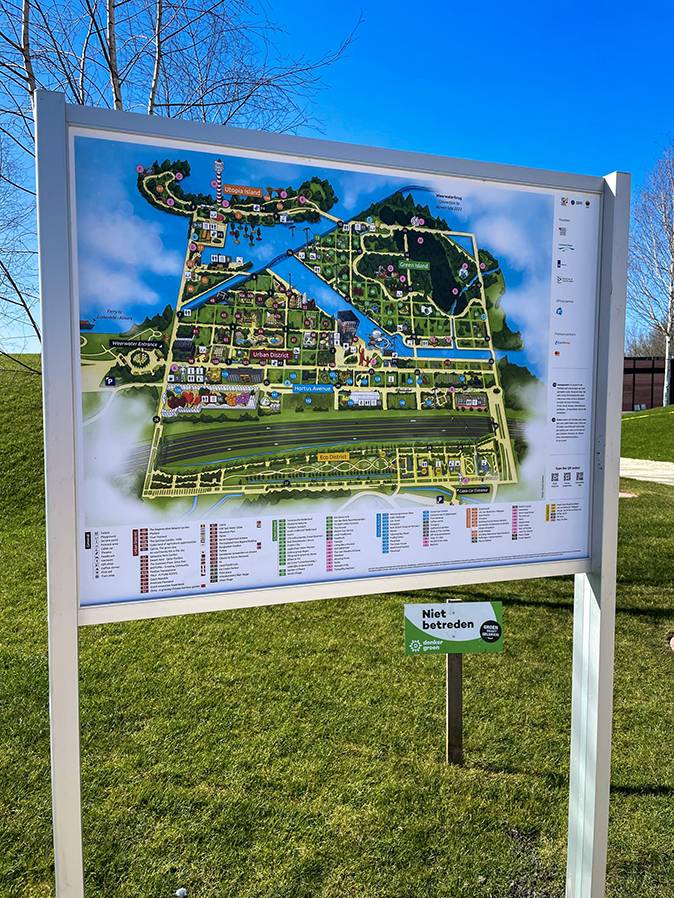





Who are the participants?
There are several categories of participation. Firstly, the Official Participants are foreign governments and their official representatives who accepted the Dutch government’s official invitation to showcase their horticulture at Floriade Expo 2022 up to four years prior.
Then there are Exhibitors, which can be companies, producers or organisations, either National or International, who present their products, services and innovations at Floriade.
Floriade has 26 countries and three organisations participating in the Expo. These include Bangladesh, Belgium, Chad, China, Colombia, Cyprus, Czech Republic, Congo, Ecuador, Ethiopia, France, Germany, Ghana, India, Italy, Japan, Luxembourg, Qatar, Somalia, South Korea, Sudan, Surinam, Thailand, Türkiye, United Arab Emirates, Yemen, Lisinia and the Sino-Europe Horticulture Association (SEHA).
Who are the Honorary Jury?
The honorary Jury consists of national and international experts from BIE, AIPH and NTR. At the beginning of July, they have been walking the length and breadth of the 60-hectare Expo site marking the participating gardens. In their deliberation, the Jury considers and keeps scores of participants’ pavilions against a set of key criteria, which include following the Expo theme of Growing Green Cities.
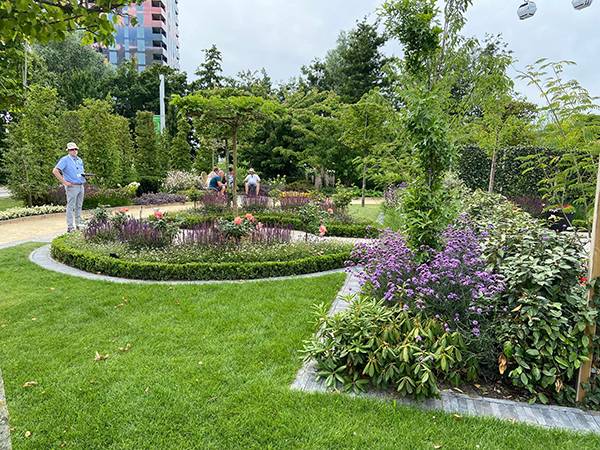



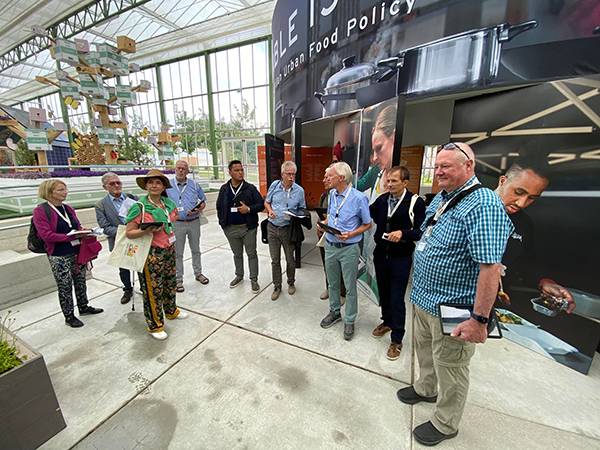

The following people make up the Honorary Jury.
Bureau International des Expositions (BIE)
Mr François Colson
AIPH – International Association of Horticultural Producers
President, Mr Bernard Oosterom
Vice-President, Mr Leonardo Capitanio
Chair of Expos Committee, Mr Kevin Chung
Green City Chair, Mr Bill Hardy
Secretary General, Mr Tim Briercliffe (Chairman of the Jury)
Member, Mr Wojciech Wróblewski, Representative of the Board of Polish Nurserymen Association.
The Dutch Horticultural Council (NTR)
Mr Michiel Gerritsen
Mrs Kim van der Leest
Mr John van Ruiten
Mr Georg Franke
What is the design briefing?
As they look at the indoor and outdoor gardens, the Jury will consider whether the participant is delivering the Expo’s future-focused message and how well the participants are addressing the challenges.
They also consider the educational factor of the horticultural displays, checking whether the stories presented in the pavilions will benefit visitors from other countries or organisations.
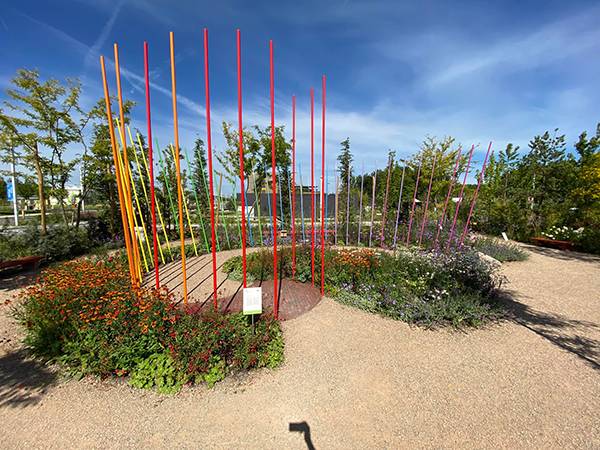

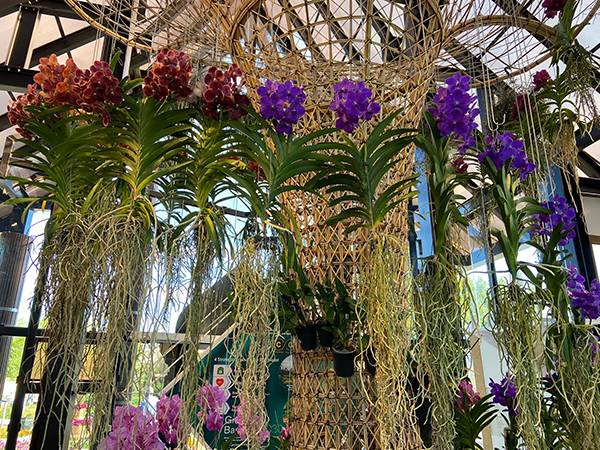

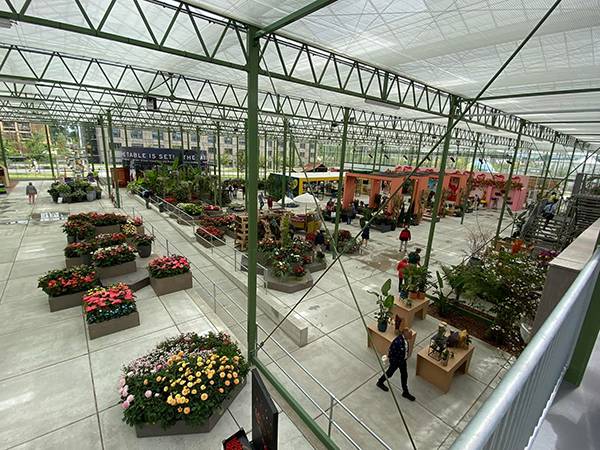

Floriade has four main sub-themes, and the participants were asked to focus on one or more of the following criteria:
Greening the City
▪ solutions to make cities greener
▪ less water passing through the paving
▪ nature inclusive & climate adaptive: green roofs, facades or walls;
Feeding the City
▪ solutions in the field of future/experimental agriculture and horticulture;
Healthying the City
▪ improve air quality, and humidity (indoors) with greenery
▪ quiet and relaxing places
▪ places to meet in the green
▪ relationship with people and health of indoor green and outdoor green
▪ solutions for clean water, air and soil for mental and physical
Energising the City
▪ new solutions for generating, storing and saving energy
▪ water; collection, reuse, purification (possibly with the help of plants).
Alongside these design briefings and the educational message they must demonstrate, the pavilion organisers must pay attention to the sustainability of the pavilion’s construction.
Enjoy a wonderful day at Expo 2022 Floriade
Overview of official participants
Shapla – Bangladesh


The lush green ecosystem of Bangladesh is on display, and its arrangements represent the shape of its national flower, the shapla. There is no mistaking that the form of this symbolic flora’s petals is imitated in the pavilion’s structure, whether you are viewing from the ground or high above in the cable car.
Edible Garden – Belgium
The Belgian garden is not only beautiful but also delicious! The plants are primarily native to Belgium, and 80% of them are edible. All the materials used in its pavilion are completely reusable or biodegradable, low carbon, regenerable and natural. Everything will be reused or recycled after Floriade, from the earth, wood, and hemp to natural compostable bioplastic.
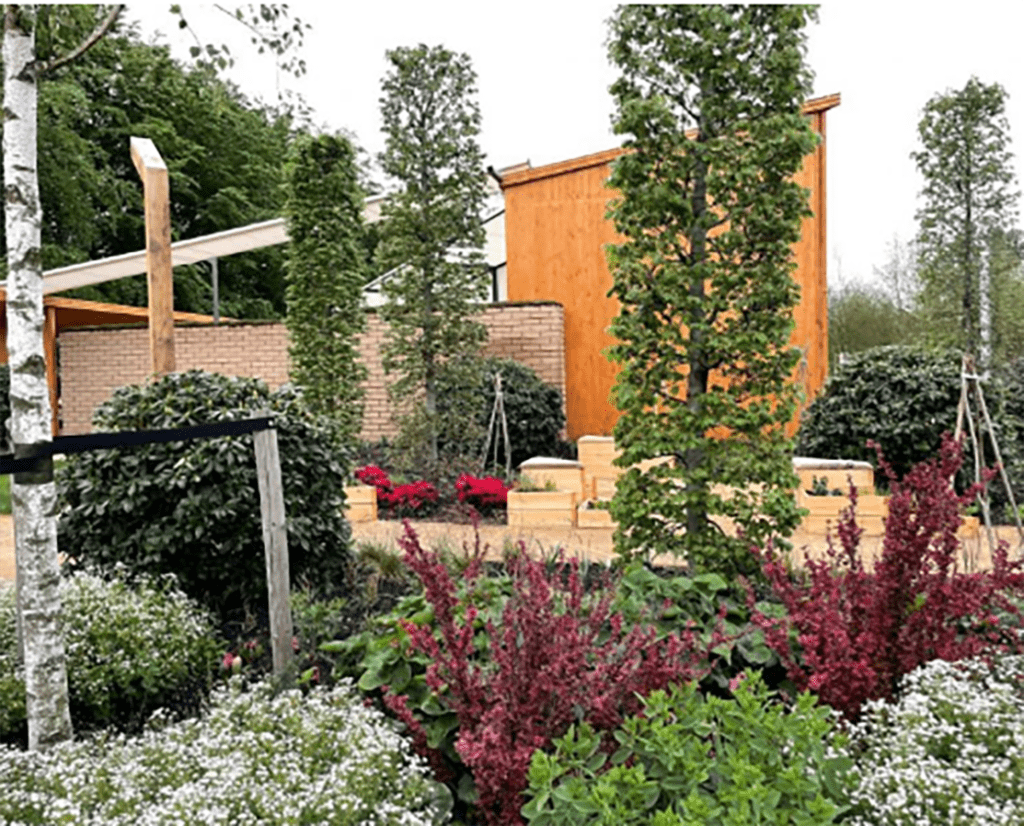

Bamboo Garden – China
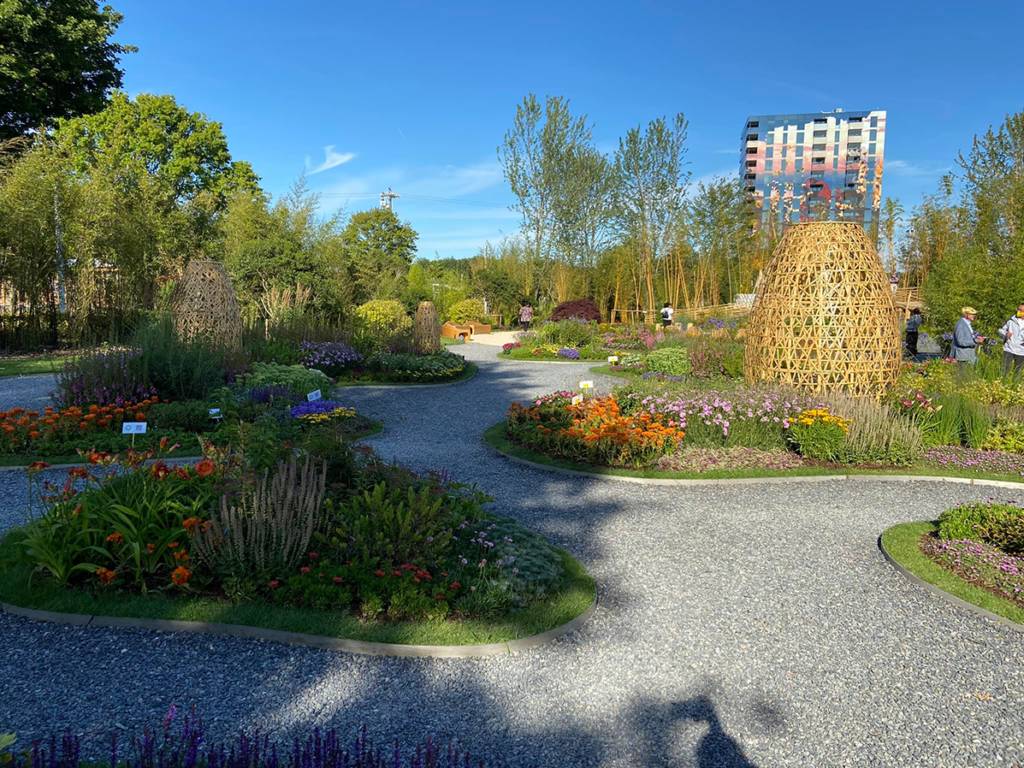

Two essential landscape elements, Bamboo and Chinese flower, are planted to shape space and to create the cultural context of China’s garden. The diverse species of plants which originate from China are well organised in the garden, indicating the latest development in Chinese horticulture.
Green Line – Cyprus
Cyprus garden, called the Green Line, is truly a green zone filled with indigenous plants. Like an elongated park that expands into the fabric of the city and gives life back to it.


Universe – Czech Republic


The Czech Republic area has a monumental wooden sculpture called Universe by Vaclav Fiala. It is a symbol of collective responsibility for our planet, following the philosophy of John Amos Comenius, who is considered the father of modern education. The Comenius Medal is one of UNESCO’s most prestigious awards honouring outstanding achievements in research and innovation. The wooden sculpture echoes the Czech philosopher’s legacy and is situated in a meadow, representing a link between the city and the surrounding countryside.
Francophone – France
The Francophone Pavilion aims to rebuild a symbiosis between humans and nature by relying on ancestral know-how and innovations in eco-construction and landscape, to create the city of tomorrow.
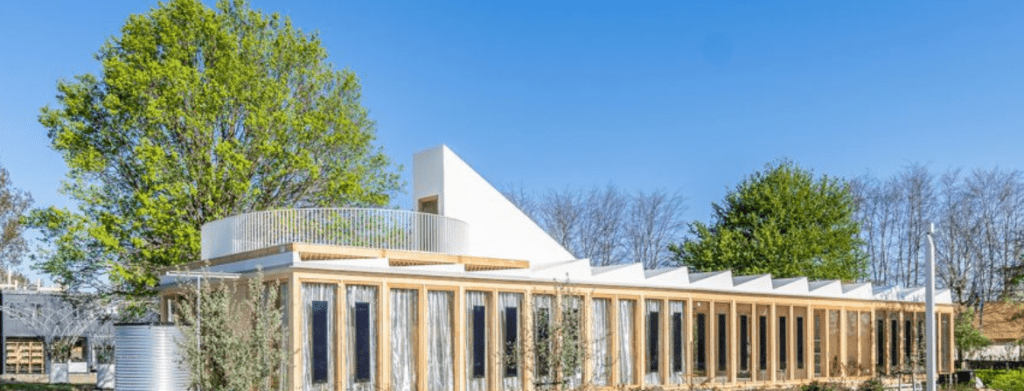

BIOTOPIA – Germany
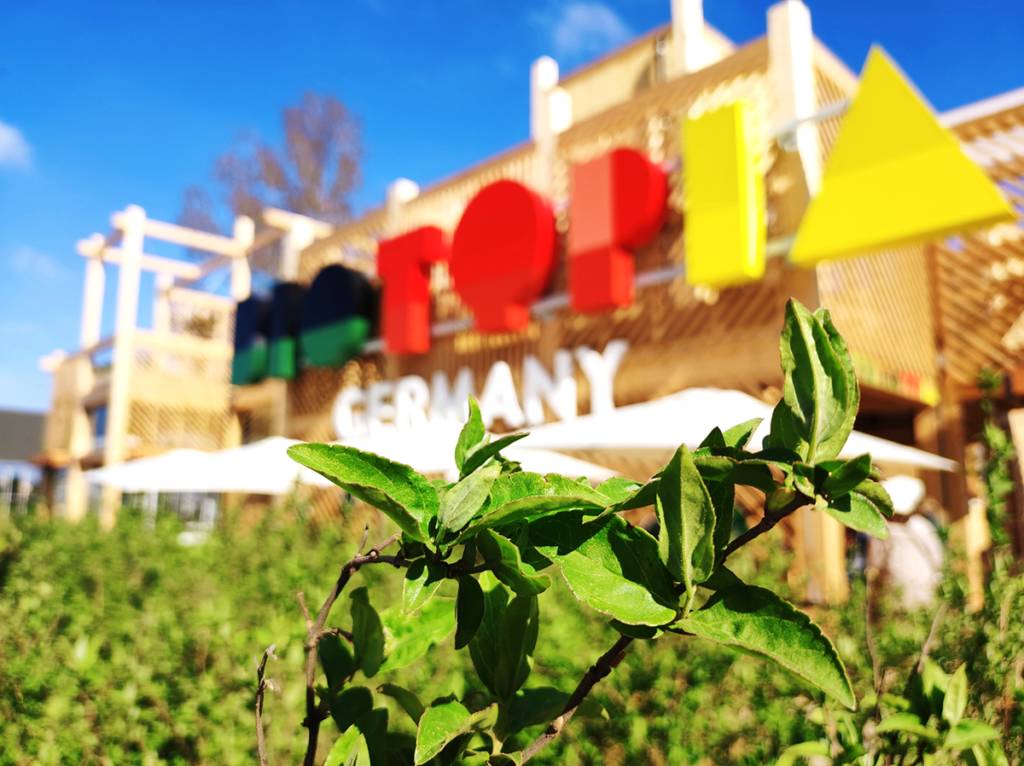

With the name ‘BIOTOPIA – Growing Community’, Germany presents new ideas and future-oriented solutions for a sustainable interaction between nature and the city.
The German Garden consists of a garden-style atrium and a partly two-storey cubist wooden construction with an interactive exhibition, roof garden and green facades. It forms a living ecosystem which changes as the plants grow during the Floriade.
Spiritual Garden – India
Soothe your senses in the Spiritual Garden of India. Here it emphasises the spiritual aspect of this nation with representations of the ancient living gods and goddesses, including the most compassionate Buddha – The Enlightened One.
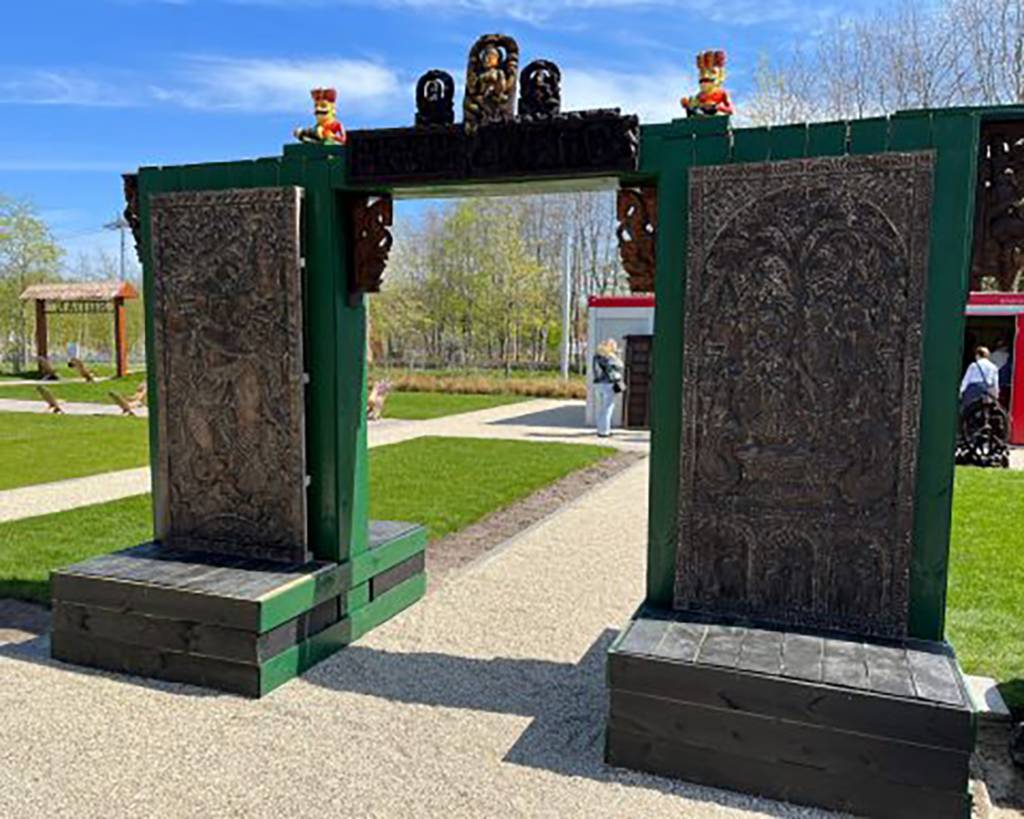

Future Roots – Italy


The Italian pavilion, with its garden of about 865 sqm, explores the Floriade theme, “growing green city”, offering alternative solutions to the challenge of preserving the Italian territory and cultural heritage.
Satoyama Farm Garden – Japan
Visitors can enjoy a Japanese garden representing satoyama, a garden of plants and trees, and a garden showcasing the forthcoming International Horticultural Exposition in Yokohama, Japan, in 2027. In the pavilion, visitors can enjoy a variety of displays every fortnight, using fresh flowers transported from Japan.
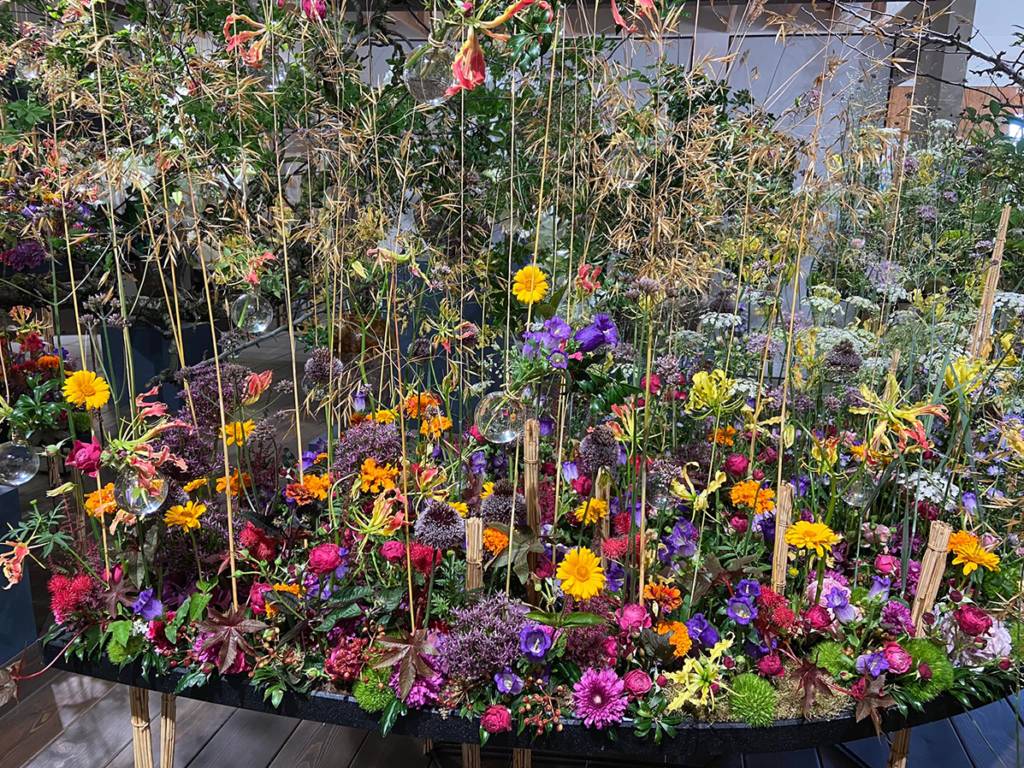

LUGA – Luxembourg
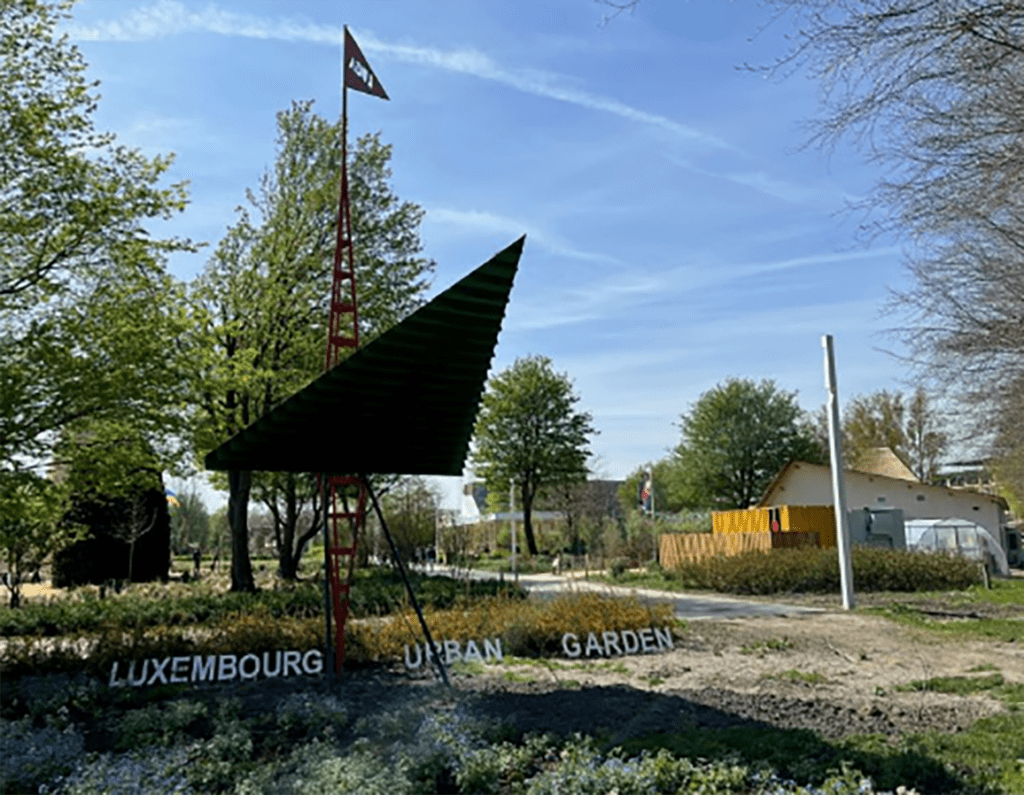

The LUGA – Luxembourg Urban Garden pavilion. Dominating the area is a weighty steel sculpture called Phyllōm. It is an architectural interpretation of a leaf held on a red steel mast. This installation symbolises the former Luxembourg steel industry and the future development of a green and sustainable city.
The Natural Pavilion – Netherlands
The host country’s pavilion shows the future of housing construction with sustainability and circularity as the key elements. You will find plenty of inspiration here for nature-inclusive living and working.


Desert Nest – Qatar
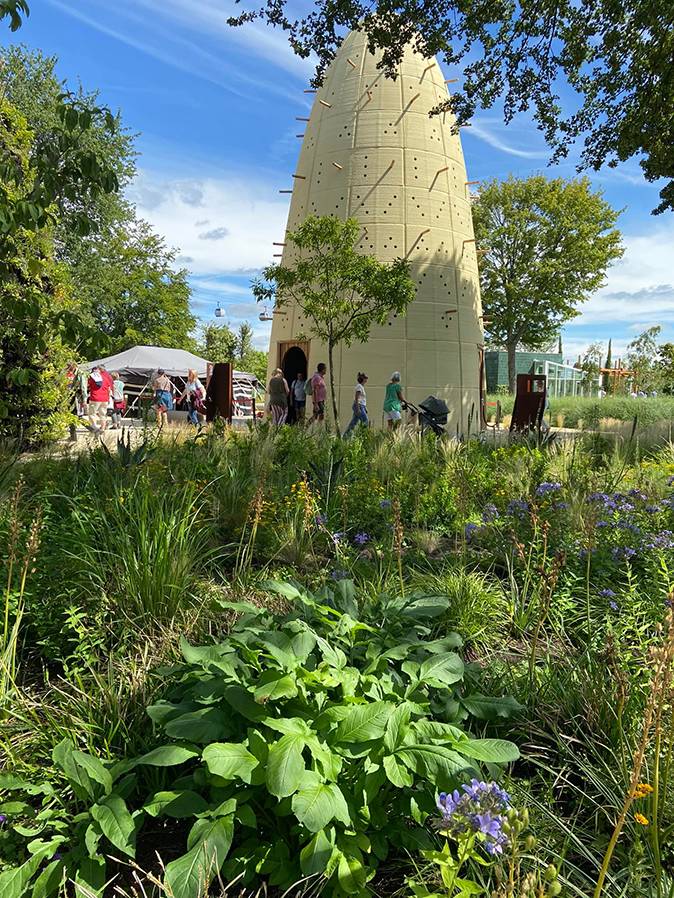

The Desert Nest is a 12.1-metre and 56tonnes replica of a traditional Qatari pigeon tower which takes centre stage here. The Guinness Book of World Records has recognised it as ‘the world’s tallest freestanding 3D printed concrete tower’.
The Qatari Ministry of Municipality commissioned DAR – a leading organisation in engineering, architecture, planning, environment, and project management – to design the strand. It was 3D-printed by Saint Gobain Weber Beamix from Eindhoven in the Netherlands.
At the end of Expo Floriade 2022, the Desert Nest will be transported and become a permanent legacy fixture at Expo Doha Qatar 2023, thus keeping the connection between the two World Horticultural Expos.
Greenhouse – Suriname
With more than 94% forest, Suriname is one of the greenest countries on earth. Beyond the cities in the coastal area, you will find mainly unspoilt nature, full of life and beauty. And it is precisely this nature that inspires today’s issues such as sustainable food production and reducing the carbon footprint. Let Suriname inspire you and share its vision on how we can respect nature and live in harmony with her, now and in the future. In the heated greenhouse, you will find trees, plants, fruit and nature-friendly solutions to the consequences of climate change.
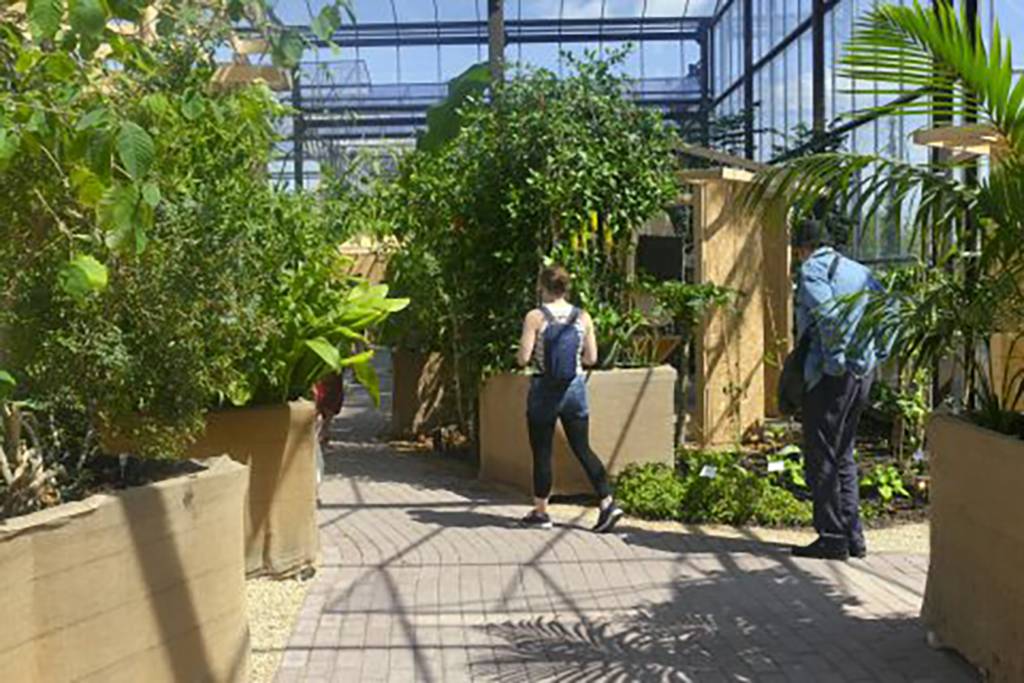

Trust – Thailand


Thailand presents the application of a “Bio-Circular-Green Economy model” with its pavilion entitled ‘TRUST’. They show how to use natural assets more efficiently with negligible environmental impact by applying new technologies and innovation to further build on Thailand’s strengths in agriculture, biodiversity and cultural diversity.
Nature Friendly – Türkiye
Connect with the natural world at Türkiye’s Nature-Friendly Pavilion’. With the global trend of urbanisation, Türkiye recognises that changes need to happen to ensure a green and liveable future for our children and future generations. Here Türkiye shares not only their vision of a delightful green future but also various delicious Turkish delicacies – in particular, ice cream.
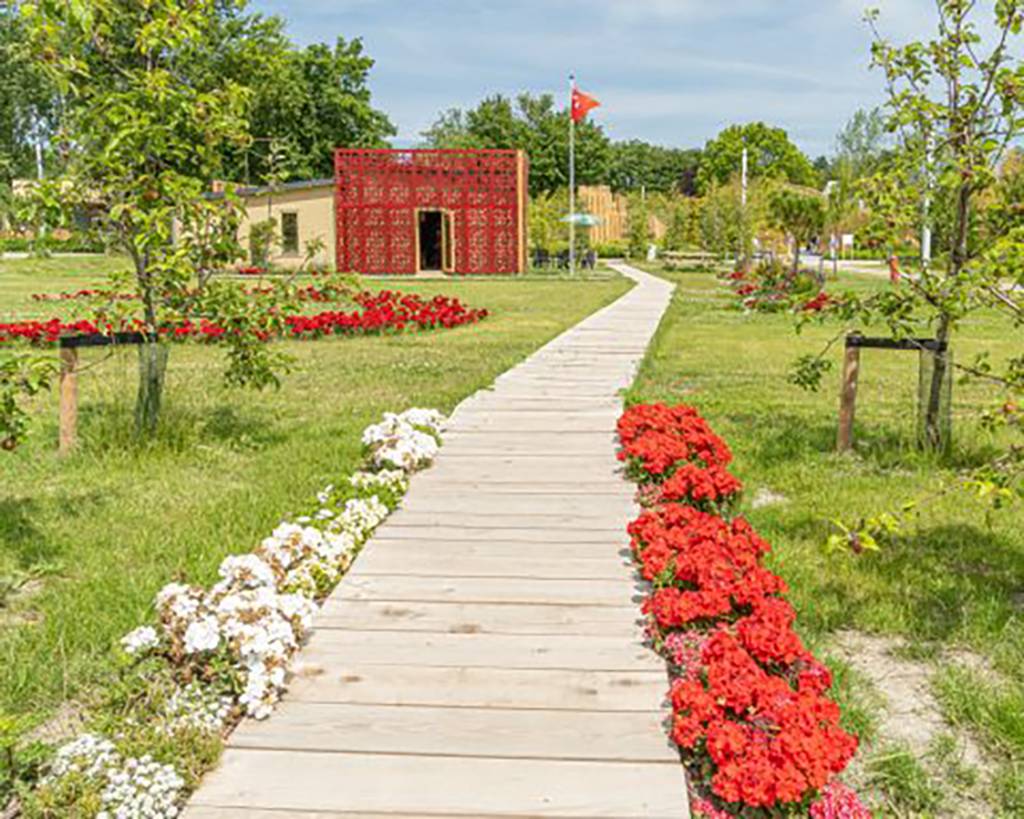

Salt Water Cities – United Arab Emirates
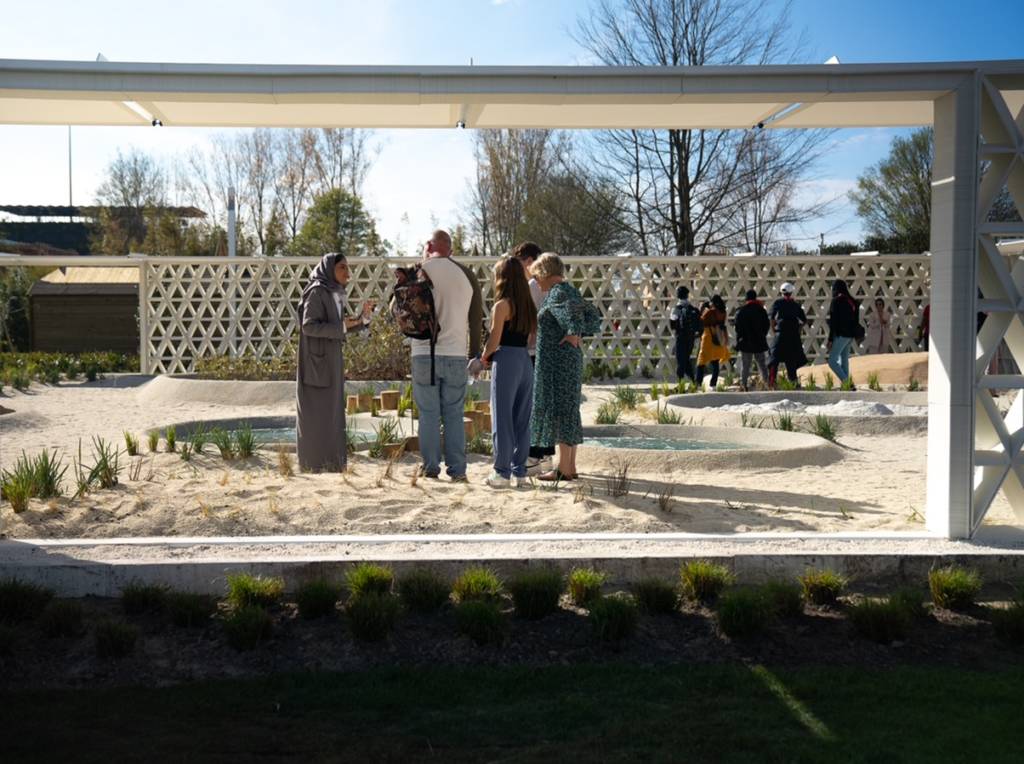

The UAE Pavilion – Salt Water Cities: where land meets sea – shares what “growing green cities” means in our challenging landscape where water scarcity, scorching heat and saline soil make typical horticulture almost impossible to achieve sustainability. Salt Water Cities tells the UAE’s unique journey of optimism and resilience, of how they have overcome the challenges of living in an ecotone of desert and sea to grow thriving, sustainable cities.
Salt Water Cities embraces the UAE’s natural environment and celebrates its innovators – its researchers and entrepreneurs who continuously explore new ways to preserve its marine biodiversity, encouraging responsible use of food and water and sharing knowledge on innovations and efforts to embrace a more sustainable future.
Growing Green Cities – World Village
In the World Village, different countries proudly share their culture and their vision of the Floriade theme ‘Growing Green Cities’. Participating countries include Chad, the Democratic Republic of the Congo, Ecuador, Ghana & Ivory Coast, Morocco, the Republic of the Sudan, Somalia and Yemen.
